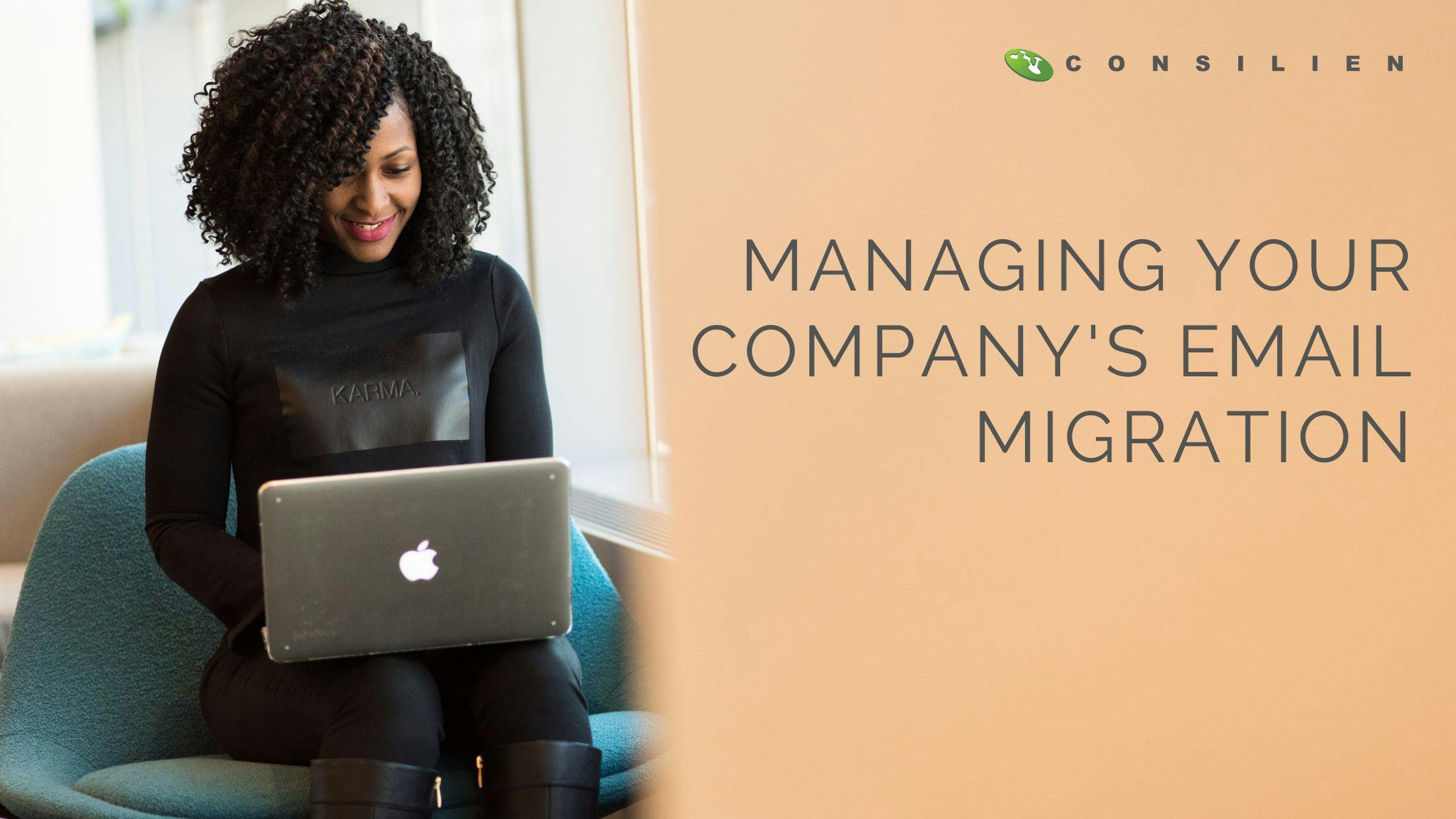HOW TO: MANAGE AN EMAIL MIGRATION

First published October, 2017
Updated July 27, 2022
There's been a few important changes to managing email migrations since we've first published this article in 2017. The most important change has been the widespread need to incorporate Multi-Factor Authentication. In fact, unless you are a very small business or one with almost no complexity, you will need third-party assistance to help you implement MFA and manage the migration, even if you have an in-house IT team.
Managing both MFA and migrating to a new system can cause a mutiny among your employees if done incorrectly.
After many, many years of managing email migrations and implementing MFA across email platforms we've developed a system to minimize the frustration and disruption to your employees. We've added our methodology to the FAQs below. If you have any questions, please contact us. We're here to help.
Email migrations can be daunting and disruptive to your workers. To minimize the frustration it's important that you know before hand:
1. What's involved
2. How long it will take
3. Planning to prevent the loss of emails
4. How much disruption (downtime) is it going to cause
5. How to get buy-in from your employees.
Your Email Migration Questions Answered
- What does it involve? The migration process is fairly straightforward. It requires that your IT service provider or in-house staff install an email migration tool on each mailbox, manage the migration, and configure the new services on the new third-party platform.
- How long does it take? It depends on the environment, how many users you have, and how much bandwidth you have to migrate the emails from the server to the cloud. The larger the mailbox, the less bandwidth, the more time it will take.
Our recommendation, from conception to going live, is to give yourself one to two weeks to complete the process. This will give you enough time to deal with any technical issues. More importantly, however, it will give you time to communicate with your employees about the process. - What are the chances I will lose my emails? While it is unlikely that there will be a disruption to the migration resulting in lost emails, a best-practice to ensure that no data is lost during the migration, is to have an accessible backup of all your emails as a fail safe prior to the migration.
- How much disruption will it cause? The biggest problem with a migration isn't the technical issues, but miscommunication with the email users regarding their ability to check email during the migration, and what the new interface will look like. In the case of having ready access to their emails, it may take time for the buildup of the cache on the new system, so they may not have immediate access to their emails while the cache is building. To minimize disruption, we recommend that your service provider or in-house technical team spend time going over what users can expect during and after the migration. We’ve successfully completed email migration for 5 to 200 users and it’s been our experience that outlining the expectations creates a smooth transition.
- How do we get our employees on board? Sending your employees one email informing them of the changes to come is insufficient. First, they are likely to ignore an email from IT or they will be busy and forget about the upcoming changes.
Instead, think of informing your employees like a drip-marketing campaign and strategically time the emails with the only the information they need now. For example:
-If you plan on completing the migration in 4 weeks then send an email from the CEO, President, or COO informing your employees about the migration, why it's important, and the go-live date. This will let your employees know that this project has management's support and they will be more likely to pay follow the instructions to follow.
-A few days later, send them a reminder of what is to come along with any likely disruptions that may occur. It's important to set reasonable expectations.
-If you're implementing MFA as part of the project, then time the implementation by giving detailed instructions that include photos.
-Keep sending the emails with reminders every week until the go-live date.
Of course there will always be a few people who fall behind and need a little extra help. But we've found this method to be extremely helpful in minimizing the agony of change.
Contact us today for a free email migration assessment. How else can we be of service?